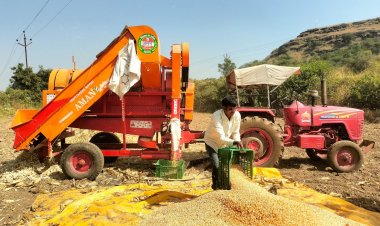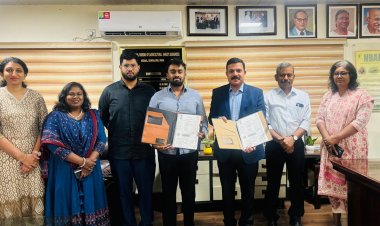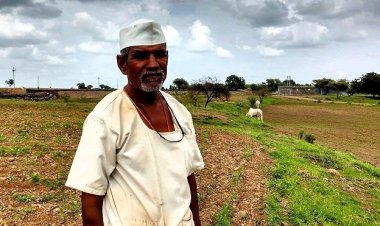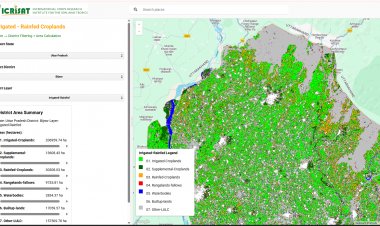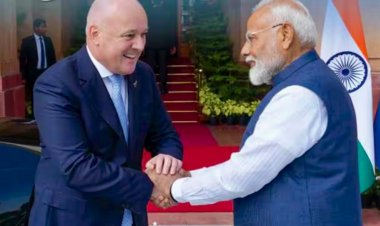"Broke to Breakthrough" narrates the story of the rise of India’s largest private dairy company
"Broke to Breakthrough" portrays how a person belonging to a peasant family in a village went on to become a successful businessman of the country without any formal business education. But it is also a case study of how a business as complex as dairy and ice cream was set up.
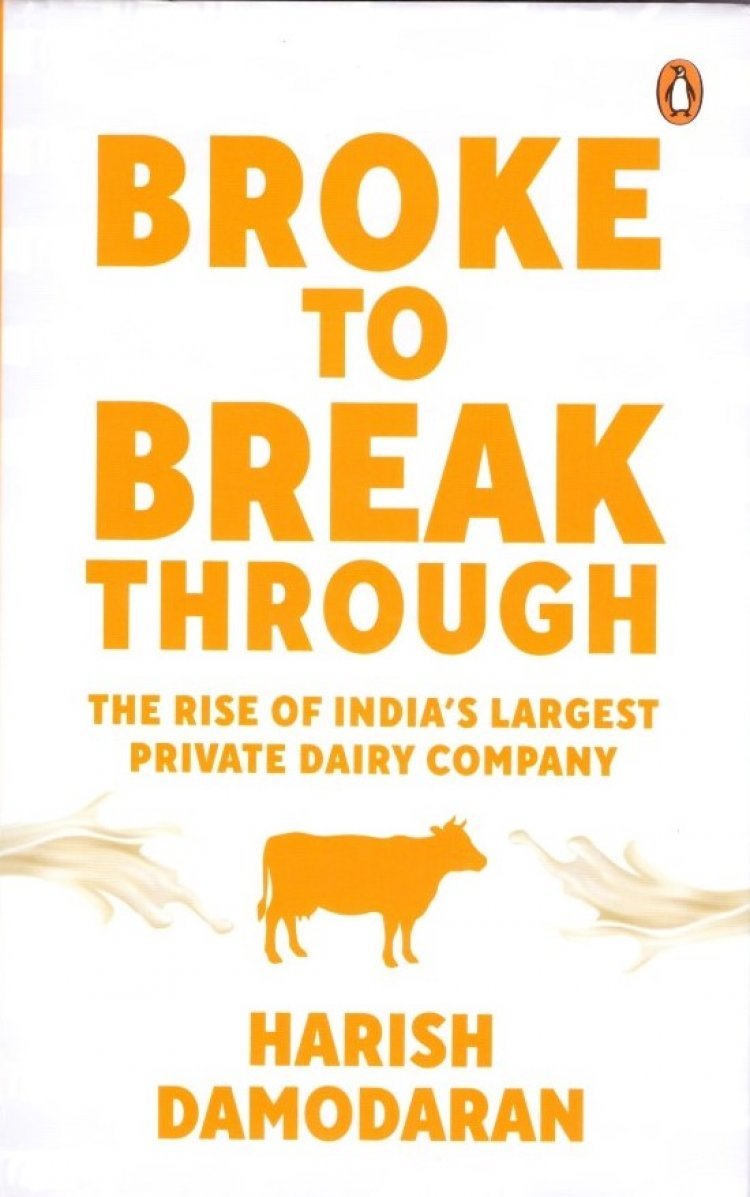
The initial part of Broke to Breakthrough, Harish Damodaran’s book on Hatsun Agro Product, took me to the world about three decades back. The ice-cream business started by RG Chandramogan with a meagre investment of Rs 13,000 was gradually picking up. This was the time when I was working with Kwality, the country’s largest ice-cream company. During my visits to small towns of Uttar Pradesh like Haldwani, Budaun and Pilibhit in the late Eighties, I was witnessing the troubles of this business. The conditions in cities of UP like Bareilly and Banaras were no different either: due to basic infrastructure problems like electricity, this business was not easy. Besides, this company was not able to make any big innovations. During those years, several ice-cream companies came up in India only to be wound up in a few years. Even a company like Kwality was bought by Hindustan Lever in the Nineties.
In fact, the promoters of that company did not have the vision that one new businessman had. It is amidst these very circumstances and business atmosphere that Hatsun expands its ice-cream business and makes its transition from a partnership firm into its new avatar of what is today the country’s largest private dairy company with an annual turnover of Rs 5,600 crore and a market capitalization of Rs 30,000 crore that helps its shareholders make huge profits in the stock market. And behind this transition are Chandramogan’s business skills and prodigious talent for decision-making that led the company to march ahead from near failure and go through various challenges. This journey of Chandramogan and Hatsun justifies the title of the book Broke to Breakthrough: The rise of India’s largest private dairy company.
In this book, Harish Damodaran has made an effort to closely examine the character of RG Chandramogan, the promoter of the company. One of the finest and most experienced journalists in the country who has been working on agriculture and rural economy for about three decades and Rural Affairs Editor of The Indian Express, Harish Damodaran has a way of presenting business biography and company history to the readers that rises to the level of art — the art of immersing the reader into the subject.
He presents every aspect of the story meticulously. For example, he dwells at length on how Chandramogan did not finish his studies and took up a small job in a sawmill before, in 1970, he started an ice-cream factory in rented shop-like premises with an investment of Rs 25,000. For this business that he started on the advice of a relative, the total investment consisted of a loan of Rs 12,000 from Tamilnad Mercantile Bank and another Rs 13,000 that he got from the sale of three of his father’s shops. This was how Arun Icecream started. It took Chandramogan’s company 18 years to reach a turnover of Rs 1 crore in 1987-88. It reached the 100-crore mark in the next 13 years and it took another eight years for the turnover to shoot up to the 1,000-crore mark.
Scaling new heights every year, Hatsun has now crossed a turnover of Rs 5,000 crore. There are four lakh farmers associated with the company. It provides employment to about 50,000 people, including the employees, vendors and business partners.
Through this book, one gets a close look at how the liberalization policies led to the rise of an aspiring class in the country. Besides, the ice-cream business was itself a complex one as it markedly lacked the requisite infrastructure. The freezer, where ice cream is kept, needs electricity and the infrastructural facilities for this business were not conducive at most of the places then. So, the bigger companies focused more on the metros and looked for opportunities for business expansion there.
But it was at this point of time that Chandramogan, who started his small ice-cream business from Chennai, adopted the strategy of looking for new business opportunities in small towns instead of competing with the bigger companies established in the metro. Chandramogan’s strategy to maintain the superior quality of the product forced the company to go for the direct purchase of raw material. And this is where the journey started for the ice-cream company to transform into a dairy company.
In fact, the big ice-cream companies from North India did not go for backward integration at that point of time. They relied on the vendors for milk, the most important raw material. These companies had to often compromise on the quality of milk and take to greater use of skimmed milk powder (SMP) and white butter. Chandramogan did not go for this compromise. It was raw material of a superior quality that led Hatsun to its transition from an ice-cream company to a dairy company.
But all this did not happen all of a sudden. There were many twists and turns in the journey. There came a time when Hindustan Lever was acquiring one ice-cream business after another in the country and Chandramogan, too, was advised to sell his ice-cream business to Hindustan Lever. To this, he replied that he wouldn’t lose hope as long as he retained his initial investment of Rs 13,000. This shows how confident he was about his business.
Hatsun constantly marched on the road ahead. The primary reason for this was the superior quality of the product. But another aspect of this was that the company launched new and premium products one after another to keep its customers hooked. Besides, the marketing strategy of the company involved decisions like direct sales and setting up of ice-cream parlours instead of going through big commission agents. Advertisements and promotions found a major place in the company’s marketing strategy. Chandramogan did not hesitate to spend money on the services of the US brand consulting firm Ries & Ries. Hatsun developed brands like Arokya Milk, Arun Icecreams, Hatsun Curd, Hatsun Ghee, Hatsun Dairy Whitener, Ibaco and Oyalo, many of which give you the feel of global brands.
Chandramogan hails from a small place called Thiruthangal in the Virudhunagar district of Tamil Nadu. It falls among the regions with the scantiest rainfall in the country. Obviously, farming is not too easy a job there. But there is something special about this soil that produced a political leader like K Kamaraj, who created an image of an able administrator and strategist at the national level with his exceptional talent. Who in the world of politics does not know about the Kamaraj Plan? Besides, my own visit to this district about 15 years back left a special impression on me. Sivakasi, the industrial capital of the country for printing, matchboxes and crackers and a major business centre, is located in this region. It is much likely that all this served as a source of inspiration for Chandramogan in his journey from being the son of an ordinary peasant family here to becoming a successful businessman.
Currently, Hatsun’s dairy business is larger than its original ice-cream business. It went on to become a dairy company from an ice-cream company. On the other hand, Amul, the largest ice-cream business cooperative, stepped into this business after its long journey of the dairy business. It is Amul that is considered to be the largest brand in the milk and dairy business. And rightly so, as the brand has a business of more than Rs 50,000 crore.
Stepping into the milk business, Hatsun carved out a niche in Tamil Nadu, where the Cooperative Milk Producers’ Federation once had a near-monopoly, with its Arokya Milk brand and this was done on the sheer basis of quality. Besides becoming the market leader in Tamil Nadu, it expanded its market from Karnataka, Andhra Pradesh and Kerala right up to Maharashtra. All this was possible due to direct partnership with the farmers. The way this company expanded its range of direct purchases led to its transformation.
Chandramogan used technology and marketing as tools to transform Hatsun into a big company — be it the use of superior freezers in ice-cream parlours, freezers in the transportation of ice cream or superior machines for production. He funded Sorin Grama, who studied Engineering and Management at MIT in the US, and his associate Sam White in developing the technology of cooling milk with the help of chillers by using stored power at the milk collection centres and made commercial use of it. Steps like the promotion of milch cattle species of the farmers who supply milk to Hatsun Agro and the centralization of their data would serve as examples for other companies. Besides, in collaboration with the Tamil Nadu Agriculture University, Hatsun helped develop a high-protein fodder variety and made it available to the farmers.
On several occasions in this journey of Hatsun’s, Chandramogan appears to be a thinking man like Dr Verghese Kurien, the father of the White Revolution, who pays attention to the details of every issue and does not show off at all. Besides, he makes no compromises in matters of quality and business necessities. Meanwhile, he also tried his hands at businesses that would fetch extra income; for example, dealerships for jerrycans to aluminium milk cans. On the one hand, he made a U-turn on business decisions like stepping into the dairy market of Kolkata and setting up plants there, and making flavoured concentrate for milkshake. On the other hand, he changed the decision of going for retail business at the milk collection centres along with the farmers and started the fodder business instead, thus managing to reduce losses by realizing his mistake in time. You get to learn from Hatsun’s story that if you move ahead in what is directly related to your business, you are bound to be successful. Chandramogan benefited from taking decisions after understanding the ground realities and from making timely corrections wherever necessary.
I see this book of Harish Damodaran as an extension of his first book India’s New Capitalist. He has adopted a unique style of collecting the world of business in a book that brings forth the depth of the subject. In his first book, Damodaran had described the evolution and business journeys of personalities that came from agricultural backgrounds and used the capital gained from there to establish business empires. Broke to Breakthrough also portrays how a person belonging to a peasant family in a village went on to become a successful businessman of the country without any formal business education. But it is also a case study of how a business as complex as dairy and ice cream was set up.



 Join the RuralVoice whatsapp group
Join the RuralVoice whatsapp group


















